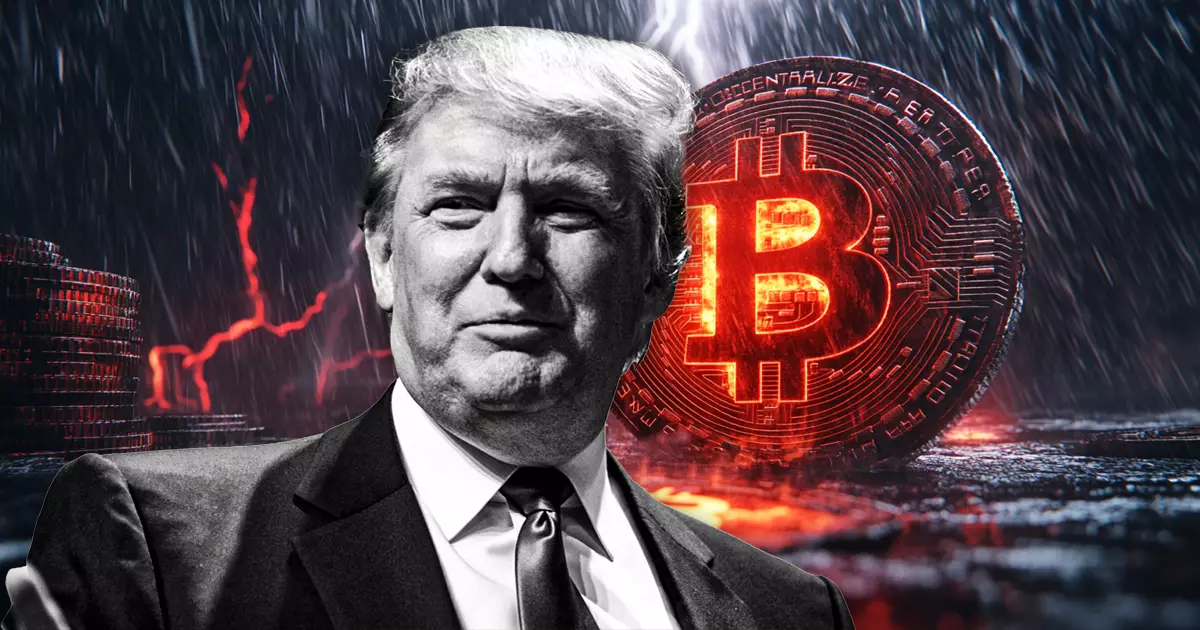In a bold but ultimately misguided move, President Donald Trump enacted an executive order on March 6, establishing a Strategic Bitcoin Reserve and a Digital Asset Stockpile aimed at fortifying the United States’ position in the cryptocurrency landscape. This action may have been presented as a stride towards modernization and innovation, but beneath its glittering surface lies a disconcerting lack of a coherent strategy that risks exposing taxpayers and investors to unsettling market fluctuations. The reality is that this initiative has not only failed to energize the crypto market but has also fostered unease among investors, evidenced by Bitcoin’s immediate price plunge of over 5%.
A Flawed Implementation Strategy
By directing the Treasury Department to manage the reserves without active acquisition beyond seized assets, the order reveals a significant oversight: a missed opportunity for proactive engagement in an ever-evolving and competitive market. The lack of an immediate strategy to bolster Bitcoin holdings might appear fiscally cautious on paper but, in practice, represents a severe underestimation of the potential growth and stability that could be garnered from a more aggressive stance. Imagine a bank opting only to stockpile coins found under sofas instead of actively investing; this order strikes a similar tone—short-sighted and, ultimately, detrimental.
The Market’s Harsh Reaction
The reaction from the market was predictably negative. Within minutes, Bitcoin crumbled by more than 5% to a low of $85,000 as investors processed the implications of a stagnant accumulation policy. This decline wasn’t merely a flash in the pan; it was a reflection of the palpable anxiety coursing through the crypto community. When market enthusiasts learned that Bitcoin was unlikely to become an active pillar of fiscal strategy, they reacted with skepticism, leading to a broader crash in altcoins. Such market sentiment reveals an essential truth: confidence is the lifeblood of financial ecosystems, and a lack of foresight can lead to a cascading effect of panic.
Perpetuating Taxpayer Fears
The executive order’s insistence that no additional costs burden taxpayers is laudable in theory, yet the failure to acquire or manage Bitcoin proactively could ultimately expose taxpayers to unforeseen liabilities. The reserves, positioned likened to a digital Fort Knox, may also tie up the assets without any promise of growth or profitability, rendering them stagnant. And what of the volatile winds of cryptocurrency? If the market shifts unfavorably, taxpayers may find themselves on the hook while the government sits idly, reflecting on decisions made in haste.
Obstacles to Effective Regulation
With the announcement of the Digital Asset Stockpile set to encompass various altcoins accrued through forfeiture, regulatory complexities loom like storm clouds on the horizon. Analysts have expressed concerns that lacking active management may give rise to significant market risks and vulnerabilities. In an industry that requires adaptability and swift decision-making, an executive order that emphasizes inertia may not stand the test of time. The expected hurdles from Congress and various regulatory bodies could add further layers of complication, transforming an already flawed strategy into a bureaucratic quagmire.
The Illusion of Leadership in Digital Assets
While Trump’s administration has positioned the initiative as a beacon for the U.S. to become a “crypto capital,” the overarching narrative seems more like a misguided attempt at keeping up with global innovators rather than establishing meaningful leadership. True leadership requires more than symbolic gestures; it calls for a comprehensive understanding of the digital asset space, active participation, and real-time adaptation to rapidly changing environments. Simply put, if the U.S. government continues to lag behind in the practical management of its digital holdings, its ambitions of global economic dominance could dissolve into mere fantasy.
The Uncertain Future Ahead
As the dust settles from this executive decision, the overarching question looms: can the U.S. realistically aspire to become a leader in the digital asset space while adhering to a static, reactionary preservation strategy? The answer, sadly, seems to point towards an alarming lack of foresight and innovation. Without concrete strategies for expansion, proactive asset management, and proper regulation, this executive order may ultimately become a cautionary tale—a missed opportunity that set the United States back in the very field it aimed to dominate.














